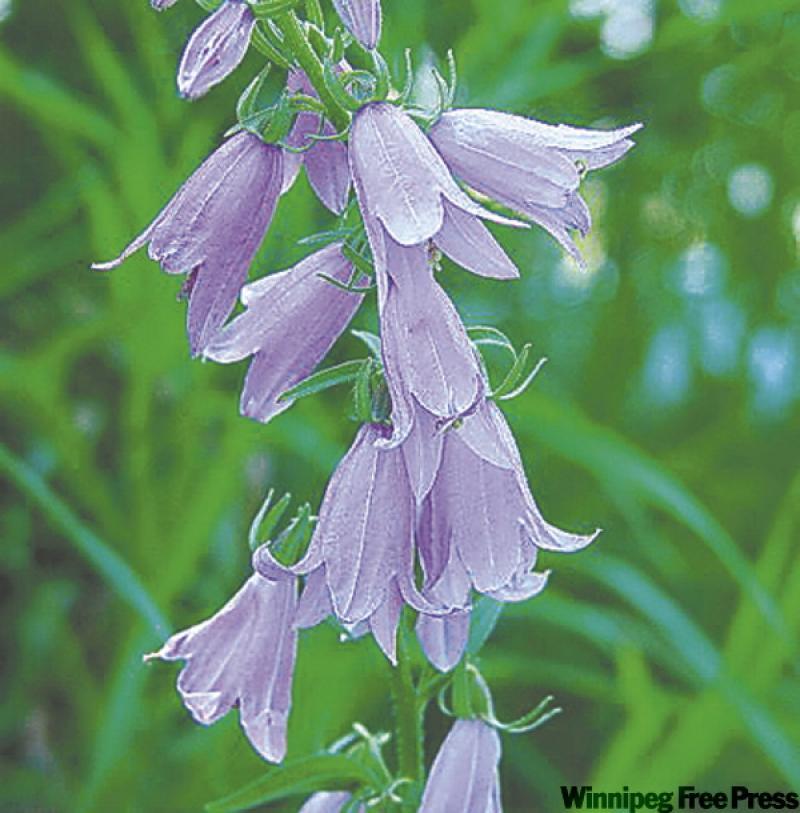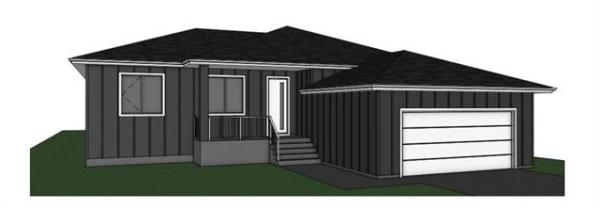
Nothing gets under a gardener’s skin more than cold, rainy weather — well, except for the resulting proliferation of weeds that is. And this summer we have both.
Weeds thrive in these conditions, even if they are about three weeks behind schedule in their normal seasonal development. The weeds are going gangbusters and gardeners can’t get into the garden to get rid of them.
Most of my casual conversations and mail revolve around the frustration gardeners are experiencing, such as this e-mail from Louise Sloane:
“I just wondered if you would be able to do a column on noxious weeds, particularly creeping bellflower, which seems to be taking over our neighbourhood and others in the city I understand from friends. We have back lanes, sidewalk edges, flower beds, etc. full of this and because it spreads by seed and tuberous root it is extremely invasive. You likely know all this!
The city/municipality is responsible for overseeing the Noxious Weeds Act (see http://web2.gov.mb.ca/laws/statutes/ccsm/n110e.php) but property owners do have a responsibility, too.
“General duty to destroy weeds
3(1) Each occupant of land, or, if the land is unoccupied, the owner thereof, or the agent of the owner, and each person, firm, or corporation who or which is in control of, or in possession of, or in charge of, land, shall destroy all noxious weeds and noxious weed seeds growing or located on the land as often as may be necessary to prevent the growth, ripening and scattering of weeds or weed seeds.
Reports to the weed inspectors can be made about particular yards to the weed inspectors, and they can alert the property owners. However, education may be a better method of combating creeping bellflower. Perhaps there are other noxious weeds which should also be addressed but this one seems to be so prolific of late.
Thank you for anything you can do to protect our gardens!”
I did a column on the creeping bellflower a couple of years ago, and addressed other pernicious plants over the last ten years.
Creeping bellflower (Campanula rapunculoides), is a pretty plant that flowers from mid-summer to early fall and lasts about a month.
It is virtually indestructible, as are a couple of thousand other pernicious campanula species in the world.
Yet, I am always surprised when I see this plant deliberately planted in flower beds.
It is designated as a noxious weed in Manitoba. Creeping bellflower can take whatever Mother Nature dishes out. C. rapunculoides is tolerant of sun, shade and periods of heavy rains or severe drought and manages to survive and thrive despite intense competition from more desirable prairie plants. It’s natural habitats include open prairie, woodlands, fence rows, edges of yards, roadsides and waste areas. It is abundant in areas that receive little maintenance such as back lanes and can even invade lawns.
Pulling the plants out is impossible as the stems tear off at the crown leaving behind its creeping rhizomes. Careful deep digging, sorting and disposing of all plant material, especially the root stock, is required. Herbicides must be applied properly and in a timely fashion. Let any plants bloom and set seed and they will freely disperse thousands of them into the wind.
Creeping bellflower is just one of the dozens of noxious weeds we have growing in these parts, such as dandelion, Russian thistle, chickweed , purple loosestrife, ox-eye daisy commonly found in lawns and gardens. Check out the Manitoba weed index at http://www.gov.mb.ca/agriculture/crops/weeds/index.html (plus the Noxious Weeds Act government websites cited above.) The weed index includes photos to help identify offending species and includes tips on how to you can take the initiative to help keep our gardens and public spaces tidy and free of these plant pests. You can also order a free copy of the Urban Guide to Weed Control or download a PDF file at http://www.gov.mb.ca/agriculture/crops/cropproduction/gaa01d34.html
2009 Award for Excellence
Each year the Prairie Garden Annual Digest committee selects an individual or group that makes a significant contribution to the advancement and/or promotion of horticulture on the Northern Great Plains. Areas of involvement may include community activity, plant introduction or breeding, preservation of horticultural sites, teaching, research, extension or photography.
The 2009 Award for Excellence goes to Ken Ivey and Brenda Cameron, volunteer co-chairs of Manitoba Communities in Bloom from 1999 to 2008 of Virden, Manitoba, and Albert Parsons, President of the Minnedosa Horticultural Society and garden writer for the Brandon Sun. The awards will be presented at a luncheon September 3, 2009.
linda.stilkowski@freepress.mb.ca




